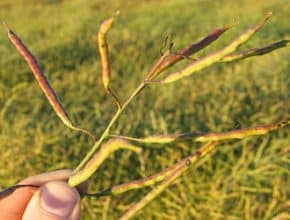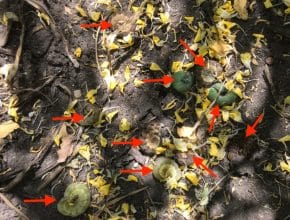This article provides brief explanations and links to answer these questions: Will the crop need a pre-harvest aid? What to look for with a pre-harvest disease survey? How to get bins ready for canola? How to prepare the combine for straight cutting? What tools are needed to measure losses?…
Canola Watch Posts
-
-
-
Growers and agronomists can use the Keep it Clean Spray to Swath Interval Calculator at spraytoswath.ca to plan pre-harvest spraying…
-
Through the pod filling time between flowering and harvest, growers and agronomists will want to take time for a more intense session of clubroot scouting. But what are you looking for? This quiz will help train your eye…
-
Vigilantly scout all canola fields for symptoms, even if growing a clubroot resistant (CR) variety. Clubroot galls can start to form about three weeks after emergence, but typically it takes about six to eight weeks for visible galls to form in fields. So galls – if present – will be visible by this stage of the season…
-
-
Diamondback moth larvae are generally low across the Prairies so far, but one hot spot has been noted in Rural Municipality 10 in Saskatchewan. This R.M. is south of Regina, near the U.S. border. Some populations of diamondback moth above the economic threshold have also been found in Eastern Manitoba recently…
-
Not really. If infection got started, then this fungus is in the plant. When conditions are ideal (relative humidity over 80 per cent and temperatures of 20°C to 25°C) then pathogen grows aggressively eating up more tissue. When conditions are not ideal, the disease slows…waiting, patiently…
-
A lot of canola companies and organizations are opting for virtual tours this year. If you have a virtual tour you’d like added to this list, please email Jay Whetter at whetterj@canolacouncil.org…



